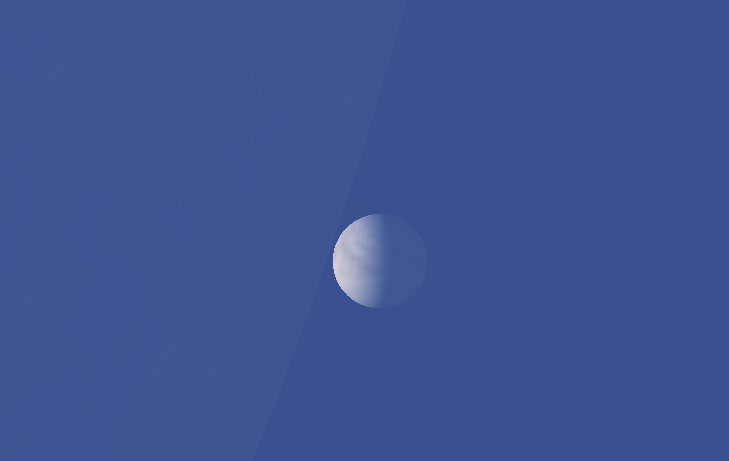Report on the occultation of Venus by the Moon in November 2023
Dr. Achim Tegeler, November 11, 2023
In September 1970, the Canadian singer and songwriter Neil Young released the song "Don't let it bring you down" on his album "After the Gold Rush". This motto is basically a good attitude for every astronomer in northern Germany. Observing the occultation of Venus by the moon would have been a great event, if it weren't for the Venus-like closed cloud cover over Osnabrück, which prevented a view into space in dense swaths. But the occasion alone is worth writing an account of the attempt at observation – we won't let it get us down!
The Earth moves in a certain orbit around the sun, spanning a plane called the ecliptic. [1] All planets, including the Earth's Moon, move in their orbits with small deviations on more or less this common plane. [2] That there are minor deviations from this plane is easy to see from the fact that we do not see a lunar eclipse every month at full moon, in which the moon gets into the earth's shadow when the earth and moon are in the same direction to the sun - i.e. in conjunction. Nevertheless, it happens from time to time that planets are covered by the Earth's moon.
On November 09, 2023 it was that time again - the moon moves in front of Venus in the morning from about 10:48 CET and covers it for about 73 minutes. The approximately 59% illuminated Venus will be obscured by the illuminated side of the Moon (waning Moon) and will become visible again on the unlit side of the Moon a few seconds after 12:00 noon. The distance of Venus is then 122 million km from Earth, while the Moon is only about 397.000 km away from Earth at that time. Although Venus, with its diameter of more than 12.000 km, just like the Earth almost three and a half times the size of the Moon, seems almost tiny behind the apparent giant that covers it due to the more than 307 times the distance from the Earth compared to the Moon.


Since the occultation takes place during the daylight (the sun is then about 45° east of Venus and at an altitude of about 18°), Venus cannot be seen with the naked eye in the daytime sky – so it has to be observed with a telescope of higher focal length.
I planned to use my Celestron C11 with a focal length of 2800 mm plus a 2x Barlow lens gaining 5600 mm focal length combined with an orange filter (TS W21 570 nm) to highlight Venus in the blue daytime sky.
The camera was planned to be my Sony NEX 6 alpha with 16.7 mpx and a APS-C sensor. So far the theory ...because:
The weather forecasts were rather depressing, indicating 100% cloud coverage for the desired period the day before:

Unfortunately, it came as predicted - all the preparation didn't help - the clouds over Osnabrück were relentless. There was no chance to observe the occultation.

The next occultation of Venus by the moon observable from Osnabrück will not take place for about 2 years, namely on September 19, 2025 starting at about 2:00 p.m. We will try again of course...
[1] The ecliptic is actually defined as the orbit of the common center of gravity of the Earth-Moon system, which is still in the body of the Earth. Therefore, as seen from Earth, the Sun does not move exactly on the ecliptic, but its ecliptic latitude fluctuates monthly by about ±0.7" around the mean value.
[2] With a deviation of just over 7° of the orbital plane from the ecliptic, Mercury shows the largest deviation of all planets. However, the dwarf planet Pluto shows the largest deviation from the ecliptic at over 17°.
[3] Stellarium is a freely downloadable and usable planetarium software that we can recommend to anyone interested in astronomy. More information and a download option can be found at: https://stellarium.org